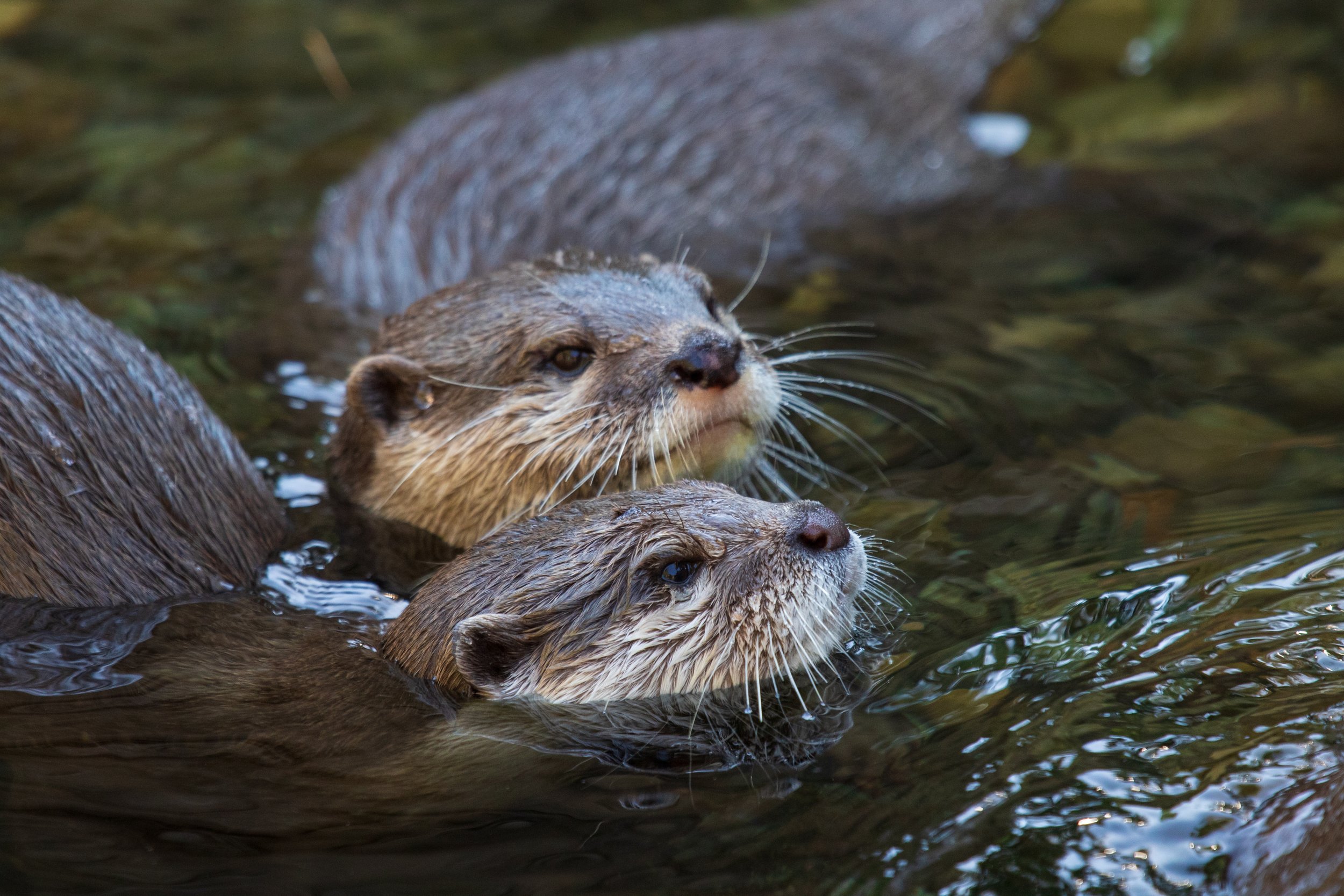Asian Small-clawed Otter (Aonyx cinereus)

©Don McCrady
QUICK GUIDE
SIZE - 60-90cm
WEIGHT - 2-6kg
DIET - Crabs, molluscs and other bottom living organisms
GESTATION - 9 weeks
OFFSPRING - 4/5 cubs
THREAT TO SPECIES - There is still a demand for live specimens for pets and zoos; hunted for furs; habitat destruction is becoming an increasing problem
CONSERVATION STATUS - Vulnerable
The Asian Small-clawed otter (Aonyx cinereus) is in fact the smallest of all otters, measuring a mere 65-90cm, and hardly ever reaching 6kg. They are also known as the Asian Short-clawed otter, Oriental Small-clawed otter or the Malaysian Small-clawed otter. Unlike the Eurasian Otter its front feet are only partially webbed, and it has short claws for digging in the mud and lifting rocks. Much like the African Clawless Otter, they are masters at using these front paws to catch prey, which for this species includes small fish, crabs, molluscs and other bottom living organisms.
© Manik Das
Asian Small-clawed otters live in a variety of diverse habitats from mangrove swamps to small streams and marshy areas. Their range is fairly vast, covering many countries in Asia in small numbers. They are largely nocturnal, returning to the cover of the bankside vegetation during the day, and are very group orientated otters. As many as 15 otters can be seen together at one time, although it is more common to find groups of 4-8 animals. Their birdlike squeaks help them to locate each other in the wild, but their social vocabulary goes much further than this and they have developed roughly 12 or more different calls.
©Amit Das
Research has shown that the groups are composed of a dominant pair together with offspring from successive litters and it is thought that the males and females pair for life. They have large litters of 4 or 5 cubs, and can produce 2 litters per year, with commonly both parents bringing up the young; however, unlike the Eurasian Otter they are not very good at rearing these young.
© Scorpion Foundation
Troubles exist in Asia for these otters as they are killed for their pelts and for their organs which are believed to have medicinal value in certain cultures. One of the biggest threats is that many cubs are taken from the wild for pets as the demand for otter pets increases. The mother is often killed as she tries to protect her young and the cubs may be so young that they still have their eyes closed. There are also threats due to pollution and habitat destruction. The activities of many western logging companies result in siltation of the waterways and damage to streams used by these otters.




